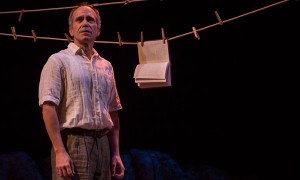LIFE IS TOO SHORT WHEN ART IS THIS LONG
A dozen years ago, dying at 50, Roberto Bolano left his unfinished 2666 as his valedictory. It was, quite simply, the swan song of a spellbinding creator of worthy works. As this massive five-part, farewell epic confirmed, the Chilean novelist had a sweeping imagination. His probing fiction is redolent of Gabriel-Garcia Marques with its mercurial magic realism and Jorge Borges with this radical writers’ playful improvisations on imaginary writers and academic pettiness. Above all, drenched in the violence of Central and South America, this anecdote-laden masterwork exposes a treacherous time.
In Bolano’s viciously interlocked worlds, justice is frustrated, cities turn unreal from sheer danger, dreams and people disappear, and causes lack consequences. Moreover, coincidences only prove God’s sloppy handiwork. People are warped by their worst impulses and ignored for their best. We’re regularly reminded that “Madness is contagious.” (The otherwise unexplained title, it seems, invokes the devil by setting his favorite numeral in our troubled century.)
A novel–especially a vast Quixotic 900-pager comprised of clashing sections that occasionally overlap but never dovetail–requires the reader’s leisure. We need to process many particulars. We take the time to discover whether its whole is greater than the sum of its parts. Ten years in the making, Goodman’s vast new offering is, of course, not a novel. It’s a very long play. Almost six hours long, it rivals Richard Wagner, threatens Tony Kushner, and shames Eugene O’Neill. On the compact Owen stage, fifteen actors play over 80 roles, buttressed by (overly) extensive film sequences, Brechtian video projections and placards, and elaborate scene changes requiring three lengthy intermissions.
Adapted and directed by artistic director Robert Falls and Seth Bockley, this non-novel is a highly digressive multi-narrative. It’s in effect “read to us” despite the illusion of action. Driven by bravura ambitions, it’s also a tour-de-force that doggedly, gracefully and often movingly pursues Bolano’s twisted and overladen stories within stories wherever they don’t go. It’s easy to like 2666 during moments that seem to matter, when it does more than deliver dialogue. It’s daunting to prize it in its intimidating entirety.
Just giving the most cursory synopsis could suck you into an artistic black hole. The work’s overriding’”but inconclusive and unfinished’”concern is the still unexplained disappearance of hundreds of women from Ciudad Juarez, Mexico (here called Santa Teresa) during the the late 2oth century. Women of all kinds’”prostitutes, factory workers in the Yankee-owned “machinodoros,” schoolgirls, matrons, inconvenient reporters’”have all vanished into the Sonoran desert, possible victims of multiple serial killers or solo slaughterers. To provide a backstory to these crimes, at the abrupt end (where it seems least effective), Bolano takes us to Nazi Germany to explain the life behind the career of the novel’s central character, Benno von Archimboldi.
Apparently disappearing into the slums of a northwest Mexican sin city, this self-made (and self-named) author, rumored to be up for the Nobel Prize, is sought by obsessed and randy literature professors. They’ve staked their careers on meeting an enigmatic writer of books not unlike Bolano’s. While clumsily pursuing him, they connect us with the corrupt cops and scared survivors of Santa Teresa’s escalating “femicide.” The fourth book (“The Part About the Crimes”) resembles a made-for-TV police drama (with the very predictable execution of “do-good” seekers of justice). We get both literal and artistic overkill, including manic recitations of the corpses discovered and the degrees of mutilation, as well as scads of stupid misogynistic jokes from the Mexican “defectives.” In the fifth section, perversely, the dead women are simply forgotten: Bolano/Falls/Bockley deliver a less than valuable prologue to the rest of the novel: This fractured fairy tale imagines the future Archimboldi as a “seaweed boy” who made up his fiction to blur any threats posed by life’s unpleasantness.
Along the way we’re regaled with set stories about drifters and dreamers. We meet a peyote-ridden painter who cut off his arm to stick the mummified appendage on his canvas and make more money. In one of many cases of “TMI,” we’re immersed in the green-eyed couplings of the researchers, a sexual triangle that can only be fixed by becoming a square. Too-close encounters include a Harlem investigator who stumbles onto pure evil, a widowed Chilean philosophy professor afraid that in this “killing field” the curiosity of his independent daughter will shorten her life, a “lucha libre” wrestling match between the jealous scholars, a Gestapo thug who prides himself on making Polish teenagers kill Jewish slaves until they lose their minds, the “Demon Penitent” who urinates and defecates on altars, and a demented German émigré suspected of multiple murder. This last misfit will return us to the search for the mysterious source called Archimboldi (after the Renaissance portrait morpher). Each section contains a pivotal, culture-clashing liaison between disparate lovers, ties that connect sexually even if they don’t thematically.
Funded entirely by the winner of a $153 million Powerball jackpot, Goodman’s richly illusionistic staging pulls out all their deep-pocket stops. The ensemble, too good to be singled out separately, range as widely as set designer Walt Spangler’s elaborately detailed locales. There’s no disputing the risk-taking and dedication of this sprawling enterprise. But, like the search for Archimboldi that “devours its explorers,” 2666 is much of a muchness. With avalanches of exposition that get lost in sheer specifics, it lengthens when it should add up. As Yeats wrote in “The Second Coming,” “The centre cannot hold.”
Above all it’s like having a novel speed-read to you, the action-illustrations passed off as profundity. Bockley calls it “binge-watching” but that’s a distinction without a difference. It’s no surprise that the theater partially empties with each intermission.
Meanwhile, women keep getting killed in Juarez, not Santa Teresa. Case not closed. Once more life fucks art.
photos by Liz Lauren
2666
Goodman Theatre’s Owen Theatre, 170 North Dearborn
ends on March 20, 2016
for tickets, call 312.443.3800 or visit Goodman
for more theater info, visit Theatre in Chicago











